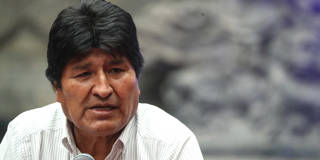What Really Happened in Bolivia?
Events in the country remain exceptionally fluid following the ouster of President Evo Morales, who has been given political asylum in Mexico. Nonetheless, three preliminary conclusions can already be drawn.

Events in the country remain exceptionally fluid following the ouster of President Evo Morales, who has been given political asylum in Mexico. Nonetheless, three preliminary conclusions can already be drawn.
MEXICO CITY – Events in Bolivia remain exceptionally fluid following the ouster of President Evo Morales. There may or may not be free and fair elections within 90 days. Morales, who has been given political asylum in Mexico, may run again for president or seek to return to power by other means. The Latin American left may recover from the fall of an icon, or continue to lose ground. Morales’s policies, good and bad, will be overturned by a rightward swing in Bolivia, not unlike the recent anti-incumbency backlash elsewhere in Latin America, or they will outlast him.